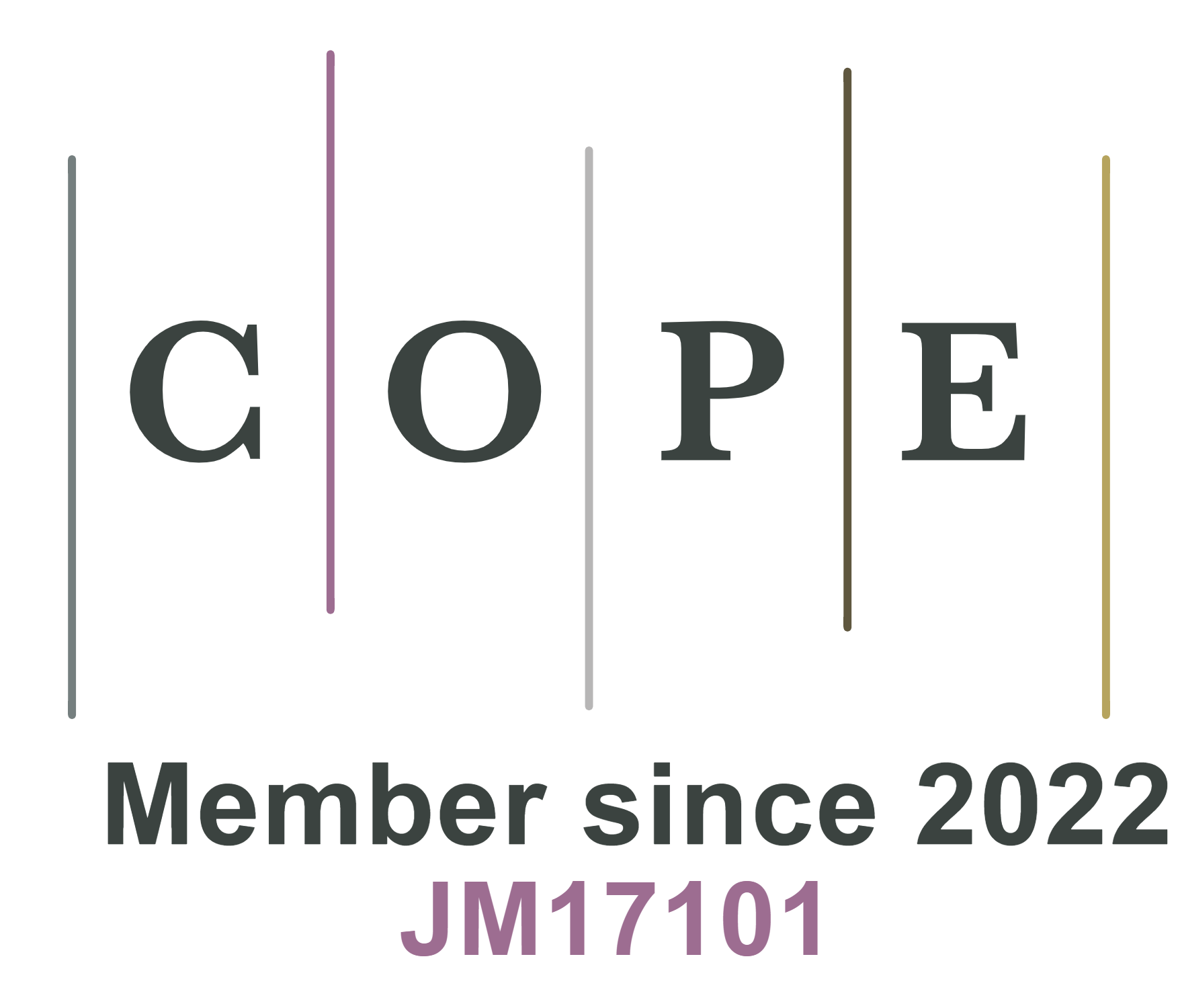REFERENCES
1. Wei, Y. M.; Chen, K.; Kang, J. N.; Chen, W.; Wang, X. Y.; Zhang, X. Policy and management of carbon peaking and carbon neutrality: a literature review. Engineering 2022, 14, 52-63.
3. Wang, S. Comment for the discovery of a new type of solid oxide electrolyte. Natl. Sci. Rev. 2017, 4, 285-6.
4. Zhu, B.; Mi, Y.; Xia, C.; et al. A nanoscale perspective on solid oxide and semiconductor membrane fuel cells: materials and technology. Energy. Mater. 2022, 1, 100002.
5. Duan, C.; Kee, R. J.; Zhu, H.; et al. Highly durable, coking and sulfur tolerant, fuel-flexible protonic ceramic fuel cells. Nature 2018, 557, 217-22.
6. Vinchhi, P.; Khandla, M.; Chaudhary, K.; Pati, R. Recent advances on electrolyte materials for SOFC: a review. Inorg. Chem. Commun. 2023, 152, 110724.
7. Xie, M.; Cai, C.; Duan, X.; Xue, K.; Yang, H.; An, S. Review on Fe-based double perovskite cathode materials for solid oxide fuel cells. Energy. Mater. 2024, 4, 400007.
8. Yang, L.; Wang, S.; Blinn, K.; et al. Enhanced sulfur and coking tolerance of a mixed ion conductor for SOFCs: BaZr0.1Ce0.7Y0.2-xYbxO3-δ. Science 2009, 326, 126-9.
9. Wang, Y.; Ling, Y.; Wang, B.; et al. A review of progress in proton ceramic electrochemical cells: material and structural design, coupled with value-added chemical production. Energy. Environ. Sci. 2023, 16, 5721-70.
10. Kim, J.; Sengodan, S.; Kim, S.; Kwon, O.; Bu, Y.; Kim, G. Proton conducting oxides: a review of materials and applications for renewable energy conversion and storage. Renew. Sustain. Energy. Rev. 2019, 109, 606-18.
11. Wang, N.; Tang, C.; Du, L.; et al. Advanced cathode materials for protonic ceramic fuel cells: recent progress and future perspectives. Adv. Energy. Mater. 2022, 12, 2201882.
12. Guo, S.; Jiang, L.; Li, Y.; et al. From electrolyte and electrode materials to large-area protonic ceramic fuel cells: a review. Adv. Funct. Mater. 2024, 34, 2304729.
13. Li, G.; Gou, Y.; Qiao, J.; Sun, W.; Wang, Z.; Sun, K. Recent progress of tubular solid oxide fuel cell: from materials to applications. J. Power. Sources. 2020, 477, 228693.
14. Chen, R.; Gao, Y.; Gao, J.; et al. From concept to commercialization: a review of tubular solid oxide fuel cell technology. J. Energy. Chem. 2024, 97, 79-109.
15. Zhang, X.; Jin, Y.; Li, D.; Xiong, Y. A review on recent advances in micro-tubular solid oxide fuel cells. J. Power. Sources. 2021, 506, 230135.
16. Lawlor, V. Review of the micro-tubular solid oxide fuel cell (Part II: cell design issues and research activities). J. Power. Sources. 2013, 240, 421-41.
17. Cui, D.; Cheng, M. Thermal stress modeling of anode supported micro-tubular solid oxide fuel cell. J. Power. Sources. 2009, 192, 400-7.
18. Hou, M.; Zhu, F.; Liu, Y.; Chen, Y. A high-performance fuel electrode-supported tubular protonic ceramic electrochemical cell. J. Eur. Ceram. Soc. 2023, 43, 6200-7.
19. Tong, G.; Li, Y.; Wang, Z.; Tan, X. Batch fabrication of micro-tubular protonic ceramic fuel cells via a phase inversion-based co-spinning/co-sintering technique. J. Power. Sources. 2023, 585, 233605.
20. Liu, K.; Zhang, X.; Huang, Z.; et al. Enhancing the mass transfer of protonic ceramic fuel cells with open-straight pore structure via phase inversion tape casting. Int. J. Hydrogen. Energy. 2024, 58, 924-30.
21. Chen, C.; Liu, M.; Bai, Y.; Yang, L.; Xie, E.; Liu, M. Anode-supported tubular SOFCs based on BaZr0.1Ce0.7Y0.1Yb0.1O3-δ electrolyte fabricated by dip coating. Electrochem. Commun. 2011, 13, 615-8.
22. Xiao, Y.; Wang, M.; Bao, D.; et al. Performance of fuel electrode-supported tubular protonic ceramic cells prepared through slip casting and dip-coating methods. Catalysts 2023, 13, 182.
23. Zou, M.; Conrad, J.; Sheridan, B.; et al. 3D printing enabled highly scalable tubular protonic ceramic fuel cells. ACS. Energy. Lett. 2023, 8, 3545-51.
24. Pesce, A.; Hornés, A.; Núñez, M.; Morata, A.; Torrell, M.; Tarancón, A. 3D printing the next generation of enhanced solid oxide fuel and electrolysis cells. J. Mater. Chem. A. 2020, 8, 16926-32.
25. Suzuki, T.; Yamaguchi, T.; Fujishiro, Y.; Awano, M. Fabrication and characterization of micro tubular SOFCs for operation in the intermediate temperature. J. Power. Sources. 2006, 160, 73-7.
26. Min, S. H.; Song, R. H.; Lee, J. G.; et al. Fabrication of anode-supported tubular Ba(Zr0.1Ce0.7Y0.2)O3-δ cell for intermediate temperature solid oxide fuel cells. Ceram. Int. 2014, 40, 1513-8.
27. Yang, L.; Zuo, C.; Liu, M. High-performance anode-supported solid oxide fuel cells based on Ba(Zr0.1Ce0.7Y0.2)O3-δ fabricated by a modified co-pressing process. J. Power. Sources. 2010, 195, 1845-8.
28. Wang, M.; Wu, W.; Lin, Y.; et al. Improved solid-state reaction method for scaled-up synthesis of ceramic proton-conducting electrolyte materials. ACS. Appl. Energy. Mater. 2023, 6, 8316-26.
29. Liu, Z.; Song, Y.; Xiong, X.; et al. Sintering-induced cation displacement in protonic ceramics and way for its suppression. Nat. Commun. 2023, 14, 7984.
30. Zhao, Z.; Tang, S.; Liu, X.; et al. Preparation, characterization and application of BaZr0.1Ce0.7Y0.2O3-δ for a high-performance and stable proton ceramic electrochemical cell. Int. J. Hydrogen. Energy. 2023, 48, 39747-58.
31. Zhou, C.; Shen, X.; Liu, D.; et al. Low thermal-expansion and high proton uptake for protonic ceramic fuel cell cathode. J. Power. Sources. 2022, 530, 231321.
32. Shin, J. S.; Saqib, M.; Jo, M.; et al. Degradation mechanisms of solid oxide fuel cells under various thermal cycling conditions. ACS. Appl. Mater. Interfaces. 2021, 13, 49868-78.
33. Chen, X.; Zhang, H.; Li, Y.; et al. Fabrication and performance of anode-supported proton conducting solid oxide fuel cells based on BaZr0.1Ce0.7Y0.1Yb0.1O3-δ electrolyte by multi-layer aqueous-based co-tape casting. J. Power. Sources. 2021, 506, 229922.
34. Zhu, L.; O’hayre, R.; Sullivan, N. P. High performance tubular protonic ceramic fuel cells via highly-scalable extrusion process. Int. J. Hydrogen. Energy. 2021, 46, 27784-92.
35. Hou, M.; Pan, Y.; Chen, Y. Enhanced electrochemical activity and durability of a direct ammonia protonic ceramic fuel cell enabled by an internal catalyst layer. Sep. Purif. Technol. 2022, 297, 121483.
36. Leng, Z.; Huang, Z.; Zhou, X.; et al. The effect of sintering aids on BaCe0.7Zr0.1Y0.1Yb0.1O3-δ as the electrolyte of proton-conducting solid oxide electrolysis cells. Int. J. Hydrogen. Energy. 2022, 47, 33861-71.
37. Lyagaeva, J.; Vdovin, G.; Hakimova, L.; Medvedev, D.; Demin, A.; Tsiakaras, P. BaCe0.7Zr0.1Y0.1Yb0.1O3-δ proton-conducting electrolytes for intermediate-temperature solid oxide fuel cells. Electrochim. Acta. 2017, 251, 554-61.
38. Loureiro, F. J. A.; Nasani, N.; Reddy, G. S.; Munirathnam, N. R.; Fagg, D. P. A review on sintering technology of proton conducting BaCeO3-BaZrO3 perovskite oxide materials for protonic ceramic fuel cells. J. Power. Sources. 2019, 438, 226991.
39. Yang, K.; Wang, J. X.; Xue, Y. J.; et al. Synthesis, sintering behavior and electrical properties of Ba(Zr0.1Ce0.7Y0.2)O3-δ and
40. Luo, J.; Zhang, J.; Wang, A.; et al. Influence of particle size and sintering aid on sinterability and conductivity of BaZr0.1Ce0.7Y0.2O3-δ electrolyte. Int. J. Hydrogen. Energy. 2024, 56, 871-9.
41. Huang, Z.; Yang, Y.; Lv, H.; et al. Large-area anode-supported protonic ceramic fuel cells combining with multilayer-tape casting and hot-pressing lamination technology. J. Eur. Ceram. Soc. 2023, 43, 428-37.
42. Zhang, G.; Chen, T.; Guo, Z.; et al. A 10 × 10 cm2 protonic ceramic electrochemical hydrogen pump for efficient and durable hydrogen purification. Chem. Eng. J. 2024, 495, 153521.
43. Bai, H.; Chu, J.; Chen, T.; et al. PrBa0.5Sr0.5Co1.5Fe0.5O5+δ as air electrode for proton-conducting solid oxide cells. J. Power. Sources. 2023, 574, 233162.
44. Ullmann, H.; Trofimenko, N.; Tietz, F.; Stöver, D.; Ahmad-Khanlou, A. Correlation between thermal expansion and oxide ion transport in mixed conducting perovskite-type oxides for SOFC cathodes. Solid. State. Ion. 2000, 138, 79-90.
45. Duan, C.; Hook, D.; Chen, Y.; Tong, J.; O’hayre, R. Zr and Y co-doped perovskite as a stable, high performance cathode for solid oxide fuel cells operating below 500 °C. Energy. Environ. Sci. 2017, 10, 176-82.
46. Wang, Z.; Lv, P.; Yang, L.; et al. Ba0.95La0.05Fe0.8Zn0.2O3-δ cobalt-free perovskite as a triple-conducting cathode for proton-conducting solid oxide fuel cells. Ceram. Int. 2020, 46, 18216-23.
47. Lv, X.; Chen, H.; Zhou, W.; Li, S.; Shao, Z. A CO2-tolerant SrCo0.8Fe0.15Zr0.05O3-δ cathode for proton-conducting solid oxide fuel cells. J. Mater. Chem. A. 2020, 8, 11292-301.
48. Cao, D.; Zhou, M.; Yan, X.; Liu, Z.; Liu, J. High performance low-temperature tubular protonic ceramic fuel cells based on barium cerate-zirconate electrolyte. Electrochem. Commun. 2021, 125, 106986.
49. Zhou, C.; Wang, X.; Liu, D.; et al. New strategy for boosting cathodic performance of protonic ceramic fuel cells through incorporating a superior hydronation second phase. Energy. Environ. Mater. 2024, 7, e12660.
50. Zhang, Y.; Chen, Y.; Yan, M.; Chen, F. Reconstruction of relaxation time distribution from linear electrochemical impedance spectroscopy. J. Power. Sources. 2015, 283, 464-77.
51. Zhao, Y.; Zhang, K.; Wei, Z.; et al. Performance and distribution of relaxation times analysis of Ruddlesden-Popper oxide
52. Xia, J.; Wang, C.; Wang, X.; Bi, L.; Zhang, Y. A perspective on DRT applications for the analysis of solid oxide cell electrodes. Electrochim. Acta. 2020, 349, 136328.
53. Sumi, H.; Shimada, H.; Yamaguchi, Y.; Yamaguchi, T.; Fujishiro, Y. Degradation evaluation by distribution of relaxation times analysis for microtubular solid oxide fuel cells. Electrochim. Acta. 2020, 339, 135913.
54. Li, G.; Gou, Y.; Ren, R.; et al. Fluorinated Pr2NiO4+δ as high-performance air electrode for tubular reversible protonic ceramic cells. J. Power. Sources. 2021, 508, 230343.









